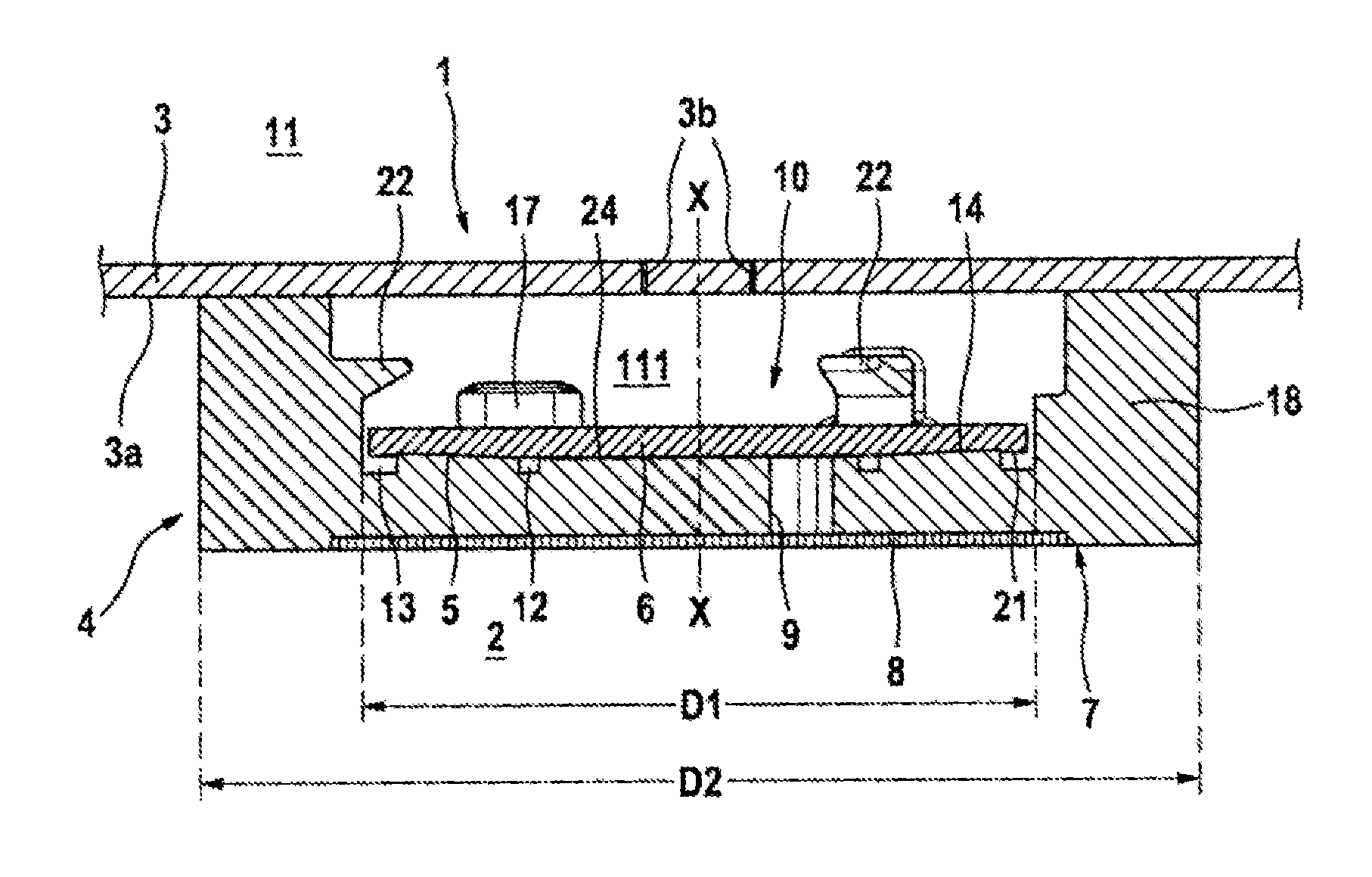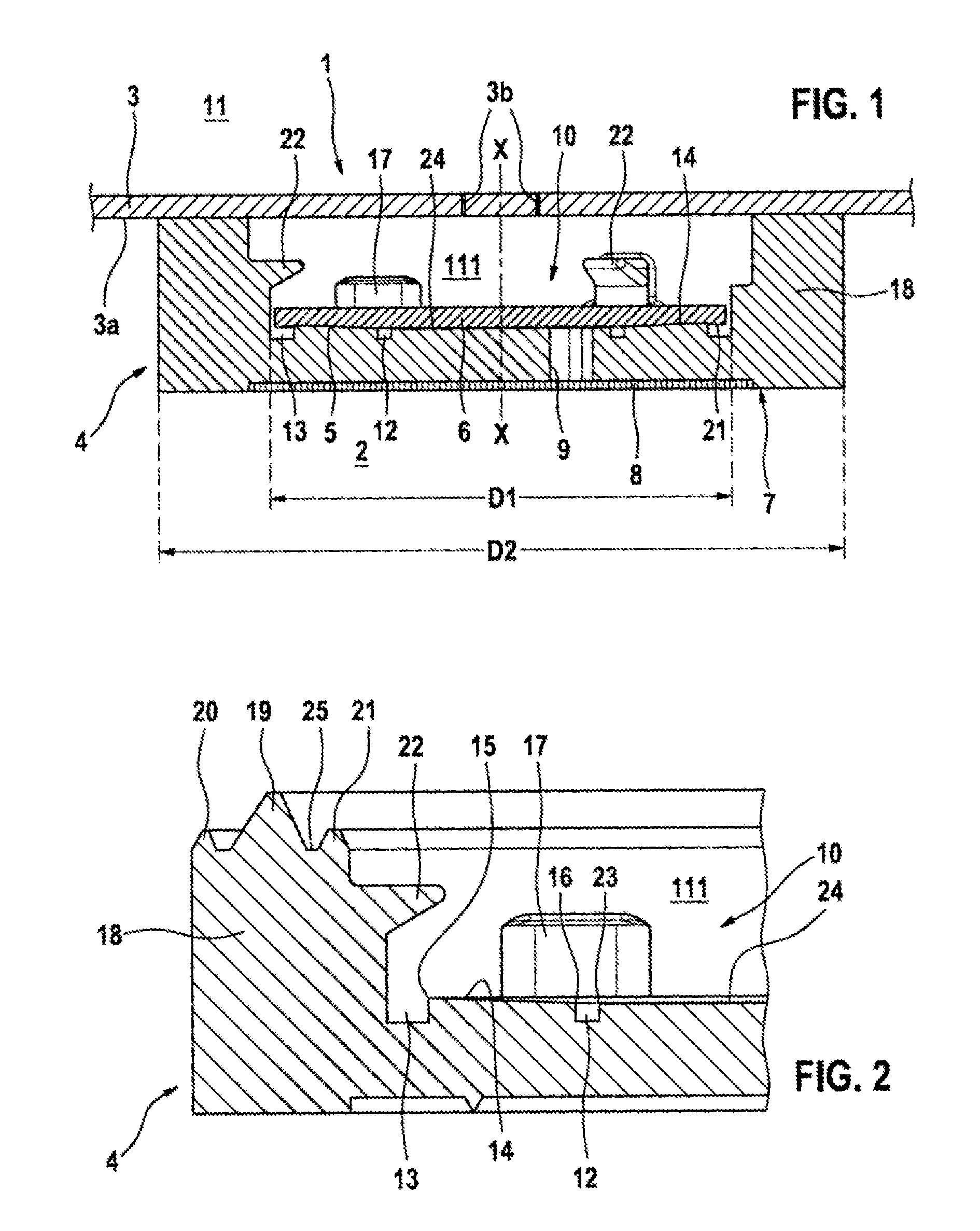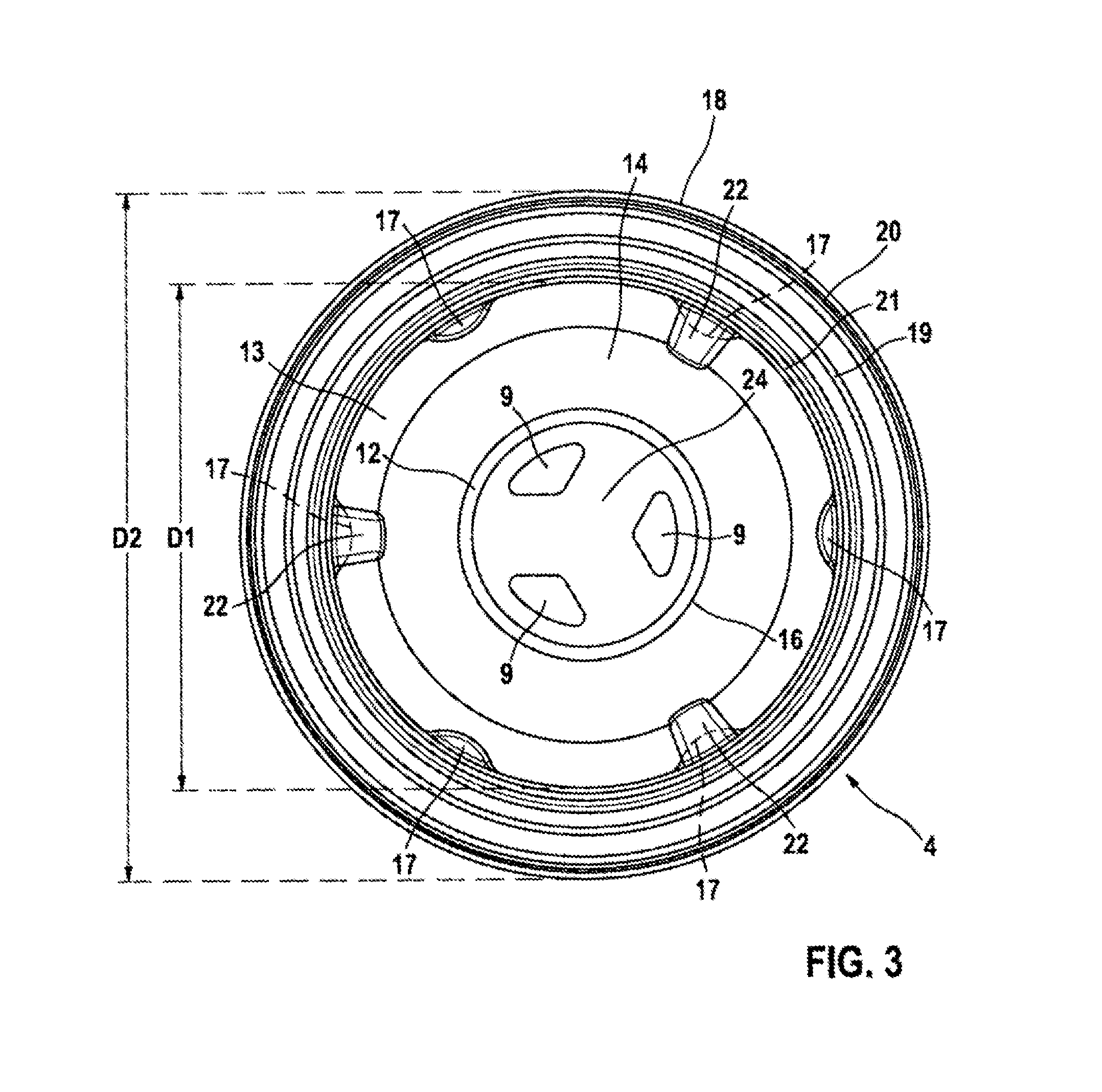Pressure relief valve with small dimensions
a pressure relief valve and small size technology, applied in the field of pressure relief valves for packaging containers, can solve the problems high opening pressure of valves, and differences in the distance between the recess and the valve diaphragm, so as to reduce the dimensions of the pressure relief valve and reduce the cost of materials. , the effect of high vacuum tightness
- Summary
- Abstract
- Description
- Claims
- Application Information
AI Technical Summary
Benefits of technology
Problems solved by technology
Method used
Image
Examples
Embodiment Construction
[0020]A pressure relief valve 1 in accordance with a first preferred illustrative embodiment of the invention is described in detail below with reference to FIGS. 1 to 3.
[0021]As can be seen from FIG. 1, the pressure relief valve 1 according to the invention comprises a main body 4 and a diaphragm 6. The pressure relief valve 1 is fixed on an inner side 3a of a package 3 by means of a sealing operation. Openings 3b, under which the pressure relief valve 1 is secured, are provided in the package 3. In FIG. 1, an interior space in the package 3 is denoted by the reference sign 2, and an exterior space around the package (surroundings) is denoted by the reference sign 11. Here, the pressure relief valve 1 has the function of releasing any excess pressure that arises in the package 3 to the outer side 11 and to seal off any vacuum prevailing in the package 3 from the outer side.
[0022]The main body 4 is designed to be cylindrical or slightly conical and relatively short and comprises a p...
PUM
 Login to View More
Login to View More Abstract
Description
Claims
Application Information
 Login to View More
Login to View More - R&D
- Intellectual Property
- Life Sciences
- Materials
- Tech Scout
- Unparalleled Data Quality
- Higher Quality Content
- 60% Fewer Hallucinations
Browse by: Latest US Patents, China's latest patents, Technical Efficacy Thesaurus, Application Domain, Technology Topic, Popular Technical Reports.
© 2025 PatSnap. All rights reserved.Legal|Privacy policy|Modern Slavery Act Transparency Statement|Sitemap|About US| Contact US: help@patsnap.com



